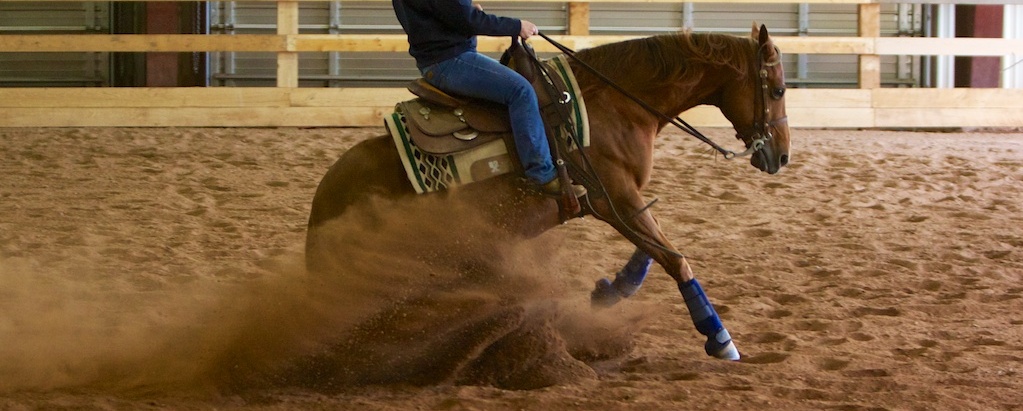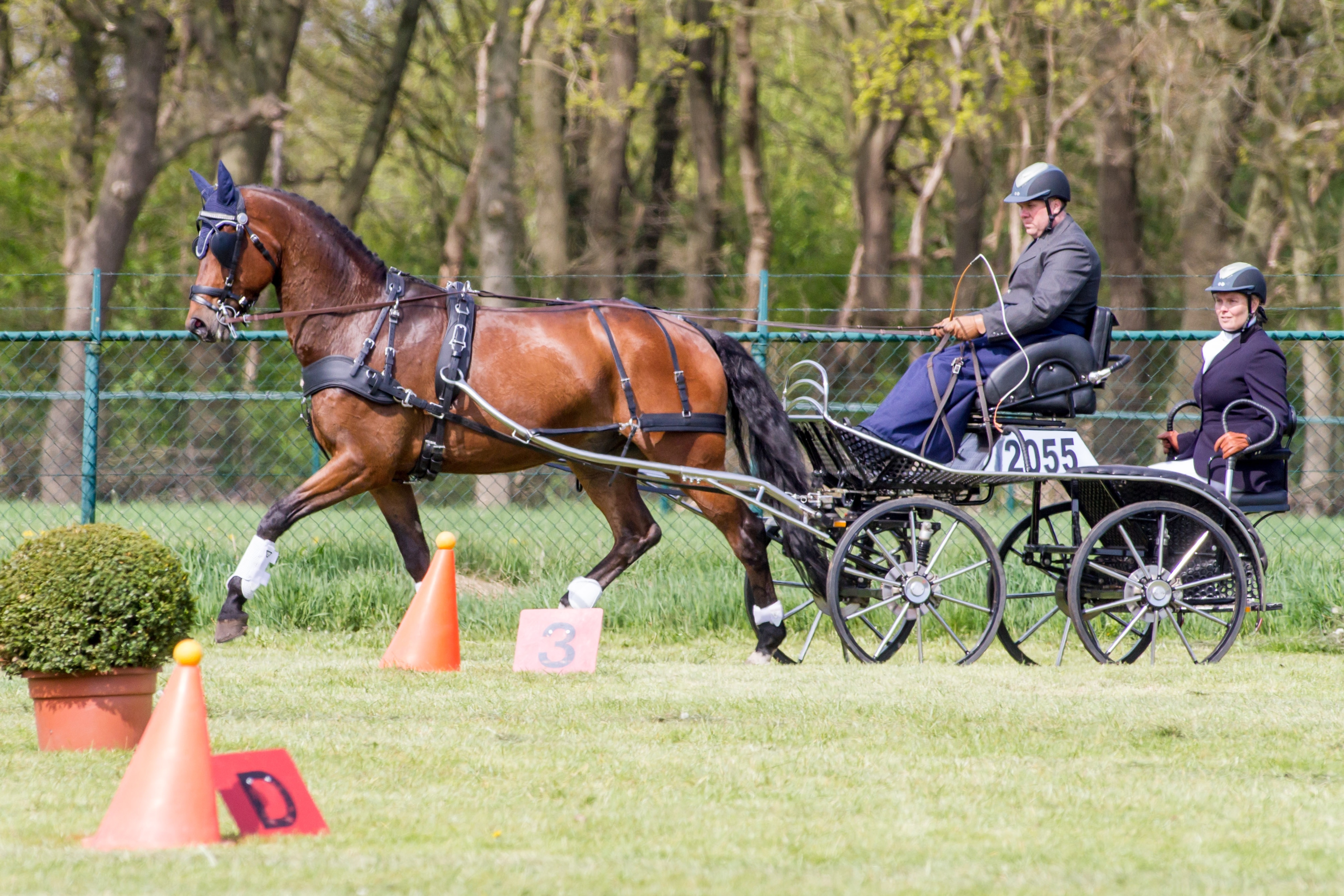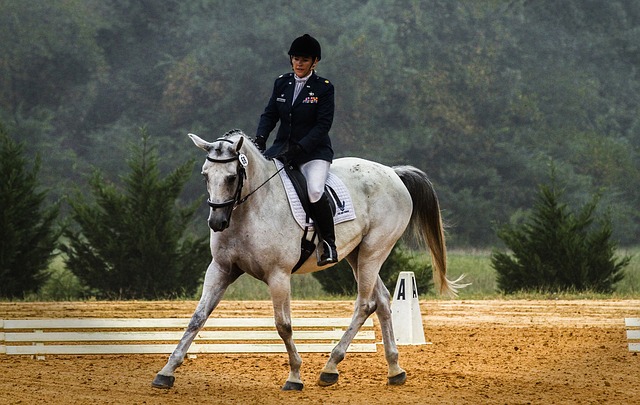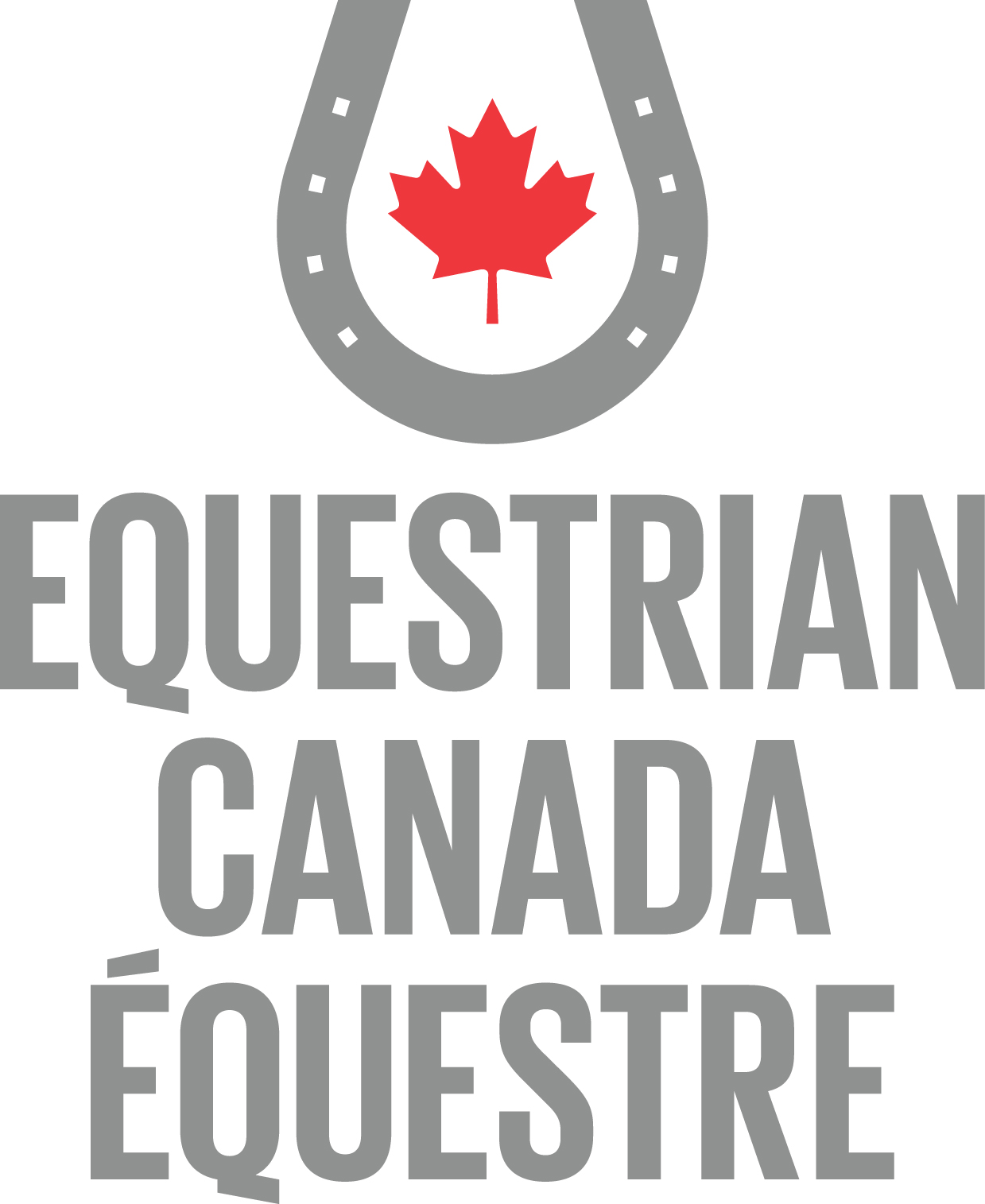Disciplines
Reining
| Reining horses and riders complete intricate patterns using a set of barely perceptible cues. At reining competitions, horse and rider pairs are placed in classes sorted by their age, status (professional or amateur) and level of experience. At the top level of competition, competitors complete one of 10 patterns that demonstrate the athletic abilities of the horse and the subtle communication between horse and rider. Included in the patterns are several compulsory movements: varying circles, small slow circles, flying lead changes, roll backs, spins and the crowd pleasing sliding stop. Reining competitors also perform freestyles, in which they choreograph the compulsory movements to music. Freestyles are judged on level of difficulty as well as music and choreography. |  |
Para-Equestrian
Equestrian sport can represent an opportunity for freedom and movement to people with disabilities. It can also be a rejuvenating component in a therapeutic program. With various degrees of assistance and support, horse sport can be a reality for many people, whether a child with cerebral palsy or an adult with paralysis. People with disabilities can learn to ride a horse, compete alongside their peers and progress to high level competitions like the Paralympics or the World Equestrian Games. Challenges can be overcome and the experience is often rewarding.
Read more...
Hunter/Jumper
|
The equestrian sport of jumping falls into two categories: show jumping and hunter. Show jumping is one of the three Olympic equestrian disciplines. Horses are guided over a course of colourful obstacles that fall down if struck. The horse/rider combination are penalized for obstacles that have been knocked down or refused, for a foot in the water of a water obstacle, or for taking more than the time allowed to complete the course. Placings are determined by numerical score only. In the hunter ring, the horse and rider complete a course of more natural-looking obstacles and are judge on the horse's paces and style over fences. The judges are looking for a safe, sound horse who would carry his rider in safety and elegance over obstacles while riding to hounds in the traditional sport of fox hunting. |
.jpeg) |
Read more...
Eventing
|
Eventing is a sporting discipline which combines three phases of competition - dressage, cross country, and show jumping. Each horse/rider combination performs a dressage test, demonstrating to the judges' the horse's paces, obedience, harmony with his rider, and degree of training. In the second phase, the horse and rider complete a course of solid-looking obstacles met on a course through fields, woods, and water, aiming to jump each obstacle without mishap within the time allowed. The final phase, show jumping, follows the same format as regular show jumping, proving that the horse is still fit and careful enough to negotiate a course of ore fragile obstacles without penalty. The scores from all three phases combine - the horse and rider with the fewest penalty points are the victors. The Olympic and international format of Eventing spaces the phases out over three days. Shortened formats for lower level competitors, called Horse Trials or Derbies, can occur in one or two days. |
|
Endurance
| Endurance riding – a non-Olympic FEI discipline – currently the fastest growing of the entire equestrian sports around the world, second only to Jumping in number of competitions. | .jpg) |
Driving
| Driving is an all-encompassing equestrian sport, not only because all horse breeds and sizes can be used, but also because it appeals to people of all ages. There are four basic divisions: recreational driving, sanctioned competitions specifically for Pleasure Driving, Combined Driving and draft horses. |  |
Dressage
|
Dressage, from the French word for "training" is often described as the art of dancing on horseback or ballet on horseback and is often compared to the freestyle of figure skating. The art of dressage is a harmonious blend of power, beauty and precision. The sport of Dressage is designed to improve a horse's balance, suppleness and flexibility, as well as improve the communication between horse and rider. At home dressage consists of several hundred hours of patient nurturing. It takes years to build the necessary strength and fortitude to enable the horse to perform these difficult movements with ease and grace. In the competition ring dressage shows us everything we think a horse should be. They are obedient yet independent, they are explosive yet contained. |
|
Dressage New BrunswickEquestrian Canada - Dressage |
|
|
Western dressage is a newer aspect of the discipline. All Dressage New Brunswick competitions offer western dressage classes. The tests can be seen at: Western Style Dressage CanadaUSEF Informational Video |
|
Read more...
Breed Sport
Each breed-specific group or club is committed to the promotion, protection, and development of its breed. Competitions range from judging horses' confirmation on the lead line, to English, Western, Saddle Seat, and/or Driving classes dedicated to the ideals of the breed.
Read more...





.png)
